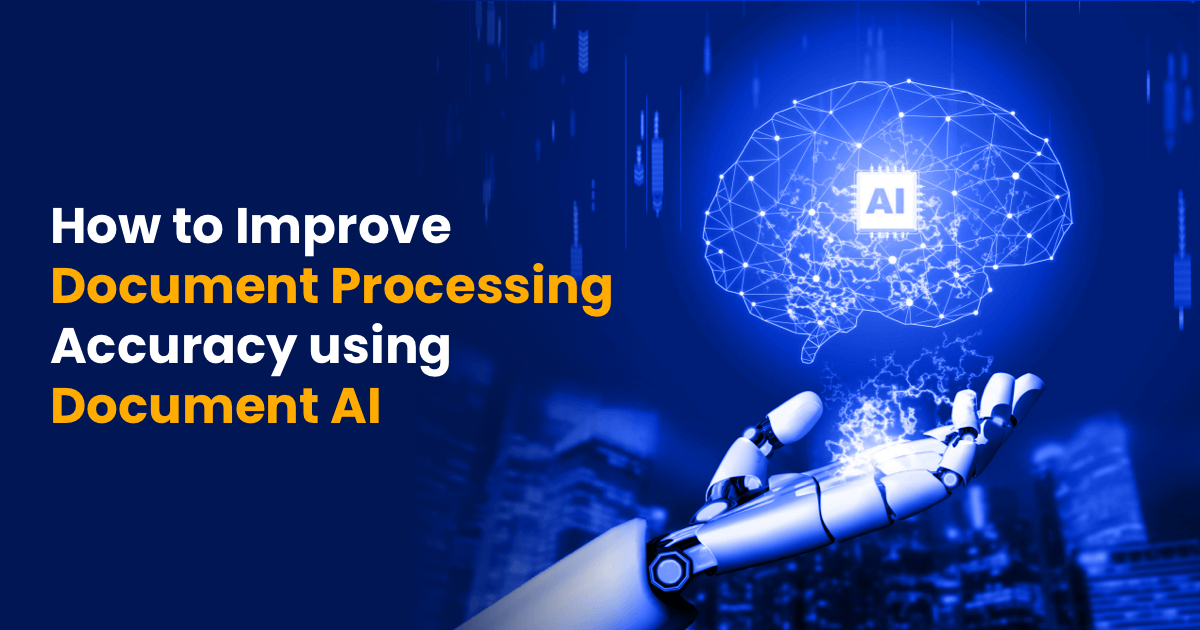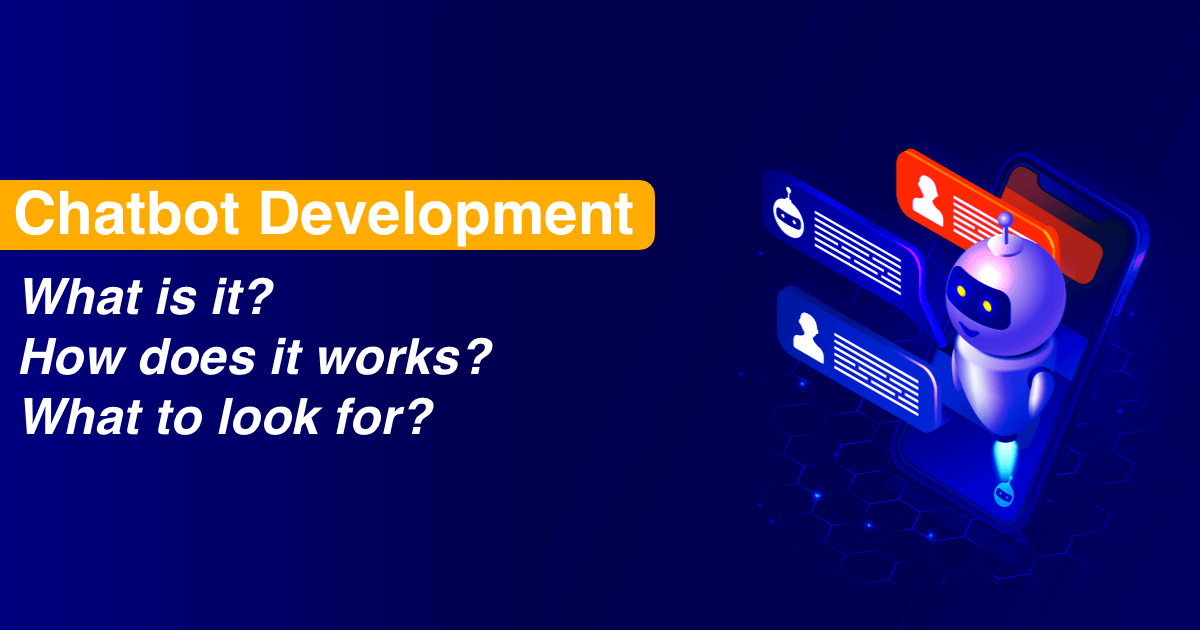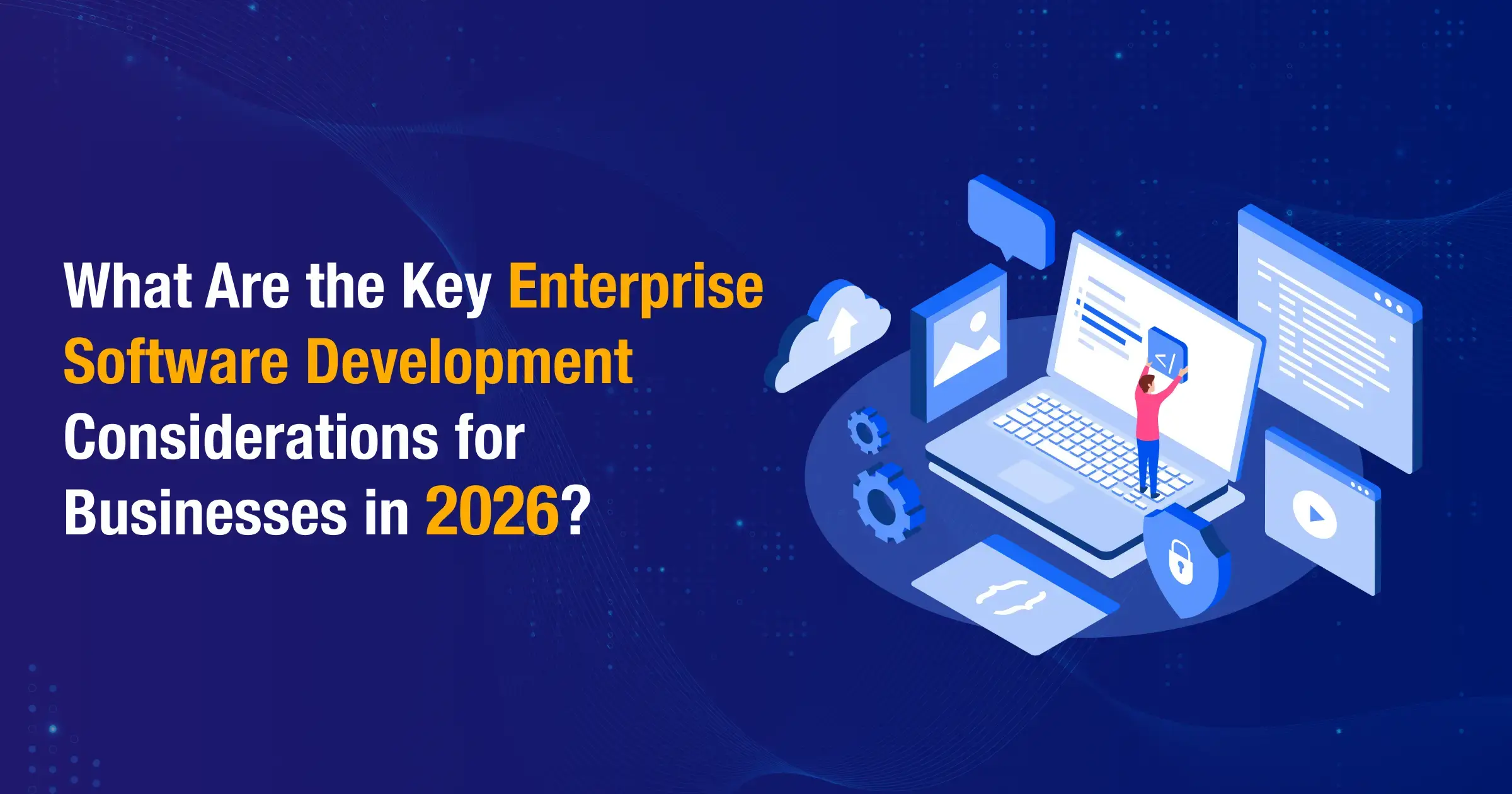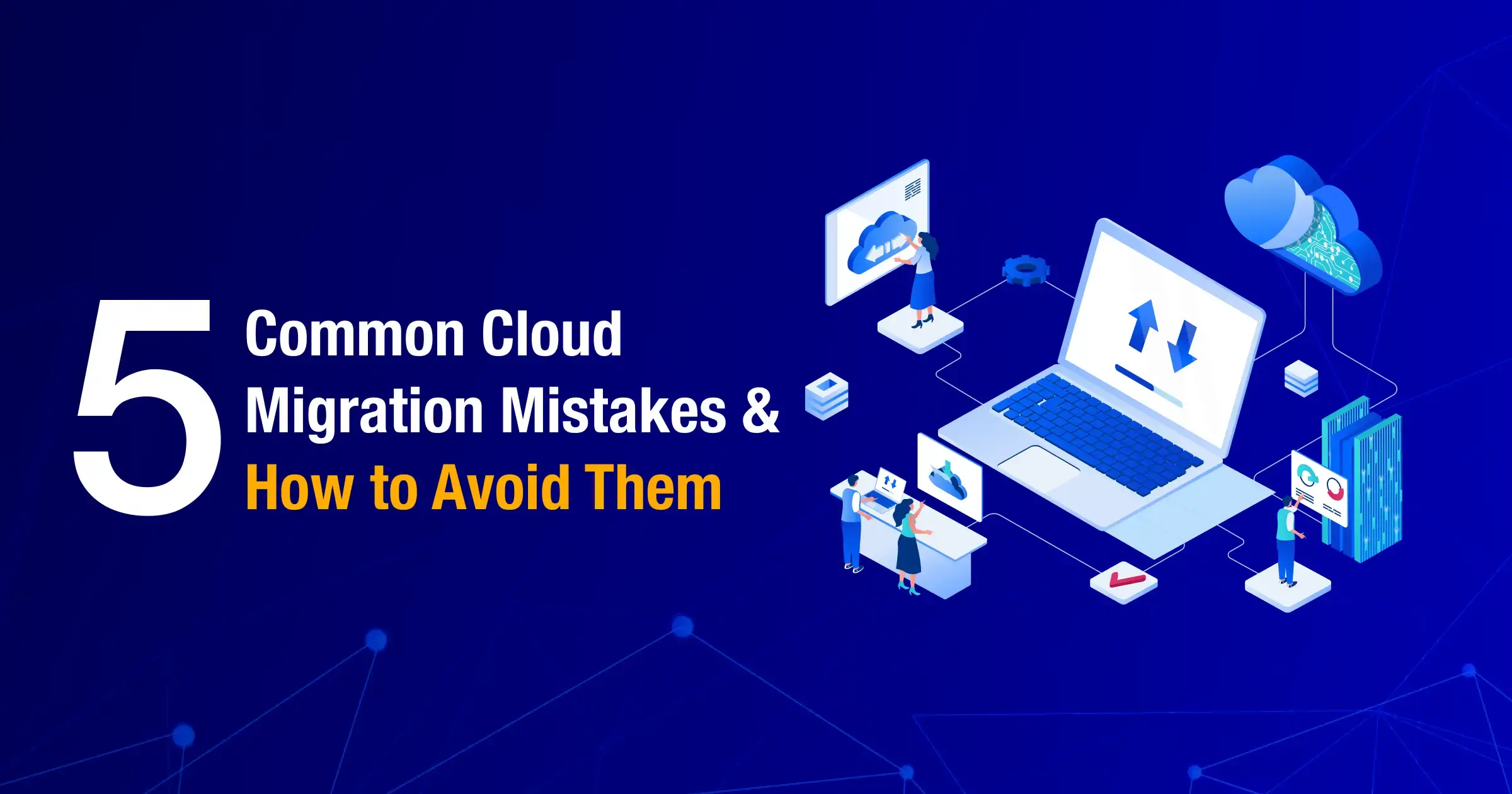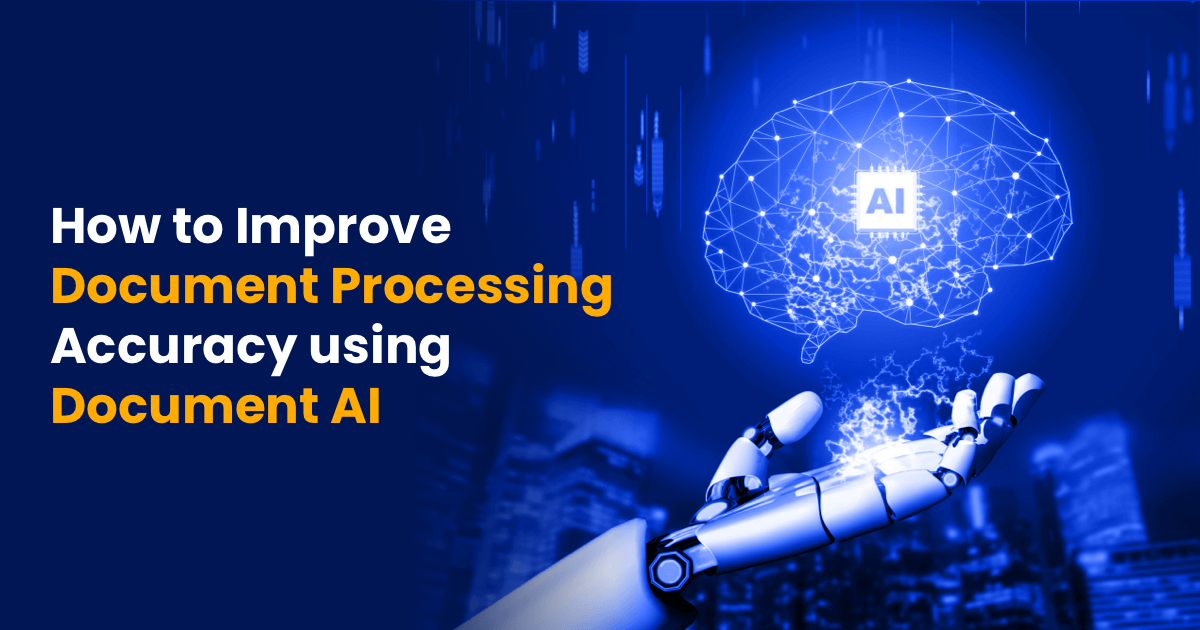
Overview
Imagine a business environment where all documents are processed automatically, without any human intervention. How efficient do you think that business functions when compared to others which still rely on human professionals to process documents, manually?
Document artificial intelligence, also called document AI, is an advanced technology which fast tracks how documents are processed. Doc AI relies upon artificial intelligence and many of its subsets like machine learning, deep learning, and importantly, natural language processing (NLP).
Using such technologies, document AI analyzes documents thoroughly, interprets and extracts data and other information from them that far exceeds human capacity and speed. Fundamentally, if you see, document AI improves the overall efficiency of various businesses, no matter which industry they operate in.
What’s more fascinating is that document AI goes beyond just extracting data from documents of various forms, it understands documents in a meaningful way, which is a game changer and opens up a ton of new possibilities than usual document processing techniques.
What is Document Processing?

Document processing is the process of converting manual data in analog forms into digital format. In other words, document processing means the use of technology to extract data from physical documents, which can be handwritten or typed ones, and convert them into digital formats so that machines are able to read them and understand such data.
Documents processing is an evolving field that simplifies the tedious process of taking out details from loads and loads of documents, which are often prone to human errors. The term document processing initially referred to processing documents manually, but later, with the advent of technology, nowadays, document processing automatically means processing documents using technology, preferably AI.
If you look from a bird-eye view, this holds true because bulk of data used and produced by businesses and other organizations are in unstructured format such as PDFs, scanned documents, handwritten documents, etc. Just thinking about processing them manually feels like a nightmare, let alone starting with them.
Document processing automation gives a sense of relief to process data from a huge pile of documents.
What is Document AI?
Document AI is a technology which refers to the use of artificial intelligence that includes natural language processing (NLP), machine learning (ML), optical character recognition (OCR), and others. It aims to extract, classify, and validate data from structured documents like excel sheets and unstructured documents like emails, forms, and other documents.
It fundamentally simplifies document processing which would otherwise require long human hours and dedicated allocation of human professionals to manually extract information from documents.
One significant advantage of using document AI besides automating the workflow is that you have high chances of reducing human errors, which are bound to happen in case of manual document process.
What is Intelligent Document Processing (IDP)?
At this point, it may be appropriate to mention that document processing fundamentally involves two types – processing as per the said or defined rules and using AI to make better decisions for processing documents. What’s arousing many of our curiosity may be the latter one, which is also called intelligent document processing (IDP) that goes beyond the pre-defined rules.
Many businesses now prefer IDP which uses AI and machine learning algorithms to automate the whole process and beyond.
It efficiently utilizes advanced technology and performs a range of functions like classifying documents, understanding data using NLP like comprehending the meaning of data entered in the name column and date of birth column, for example, interpreting data, and validating them.
According to a recent study by Grand View Research, the market size of intelligent document processing will grow at a staggering rate with a CAGR of 33.1% between 2025 and 2030. The flow of investments from all directions to IDP could possibly mean only one thing, which is that many businesses are now starting to see its potential.
So now we have understood what is document processing and how AI assists the process, let’s explore other crucial aspects that essentially help you understand more on what it means for your business.
How Doc AI works
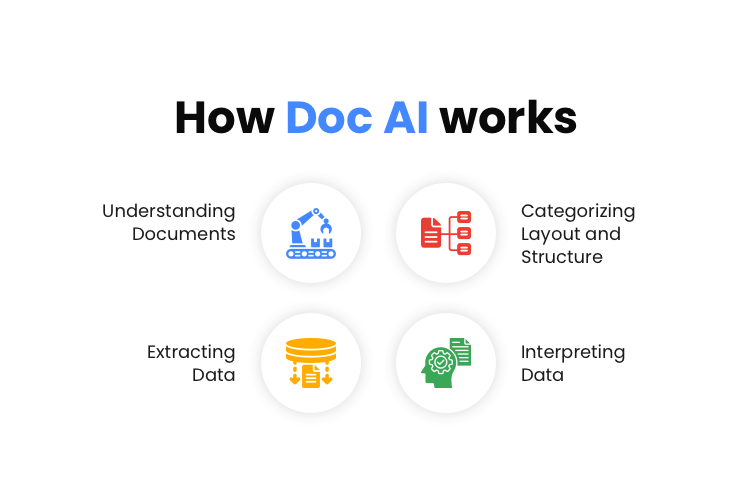
Document AI relies on a series of technologies including artificial intelligence, machine learning, and natural language processing to fundamentally process data from documents.
Make Documents Understood by Machines
Document processing utilizes machine learning algorithms and NLP to understand and comprehend data from text-based documents.
For it to perform well, the work of optical character recognition (OCR) is important, whose primary function is to convert handwritten or scanned documents with texts and numbers into machine-readable format.
This process opens up the gate for AI to read and comprehend data from PDFs, images, scanned documents, and whatever formats. Now AI will be able to extract or edit the digitized text and process documentation swiftly.
Once OCR converts data into digitized version, the same can be used for various purposes and no need to convert the documents again and again for each process.
Categorizing Layout and Structure
Typically, if you see, oftentimes document processing works on pre-defined rules which help extracting data from documents. But document AI uses machine learning models coupled with deep learning, which fundamentally helps machines to understand the complex patterns lie within documents.
As they are trained on vast datasets, they can adapt to the situation and clearly capture document layouts, what font is used, which language the document is in, and other critical information like these.
This enables document AI to interpret data from documents, however complex they can be. Additionally, you can use Doc AI in real-time, which is capable of performing complex tasks like processing legal documents and contracts.
Interpreting Data
You should know that the role of OCR is limited to make data understood by machines, and it stops there. It is, in no way, responsible for machines to interpret data and make machines to understand them, which is taken care of by natural language processing.
Natural language processing enables machines to understand and comprehend text and audio data, in this case, mostly text data. It enhances the scope of machines not only to just extract random data but to do it precisely by understanding what it means and then extract relevant information from documents.
What makes NLP attractive? It significantly reduces the possible errors by near-accurately understanding what any piece of data means, pretty much like a human.
It additionally applies linguistic models, which facilitates them to understand the whole context of a given document and correlate different sections of it, with which it recognizes information such as names, age, and date of birth from documents without any labels.
Extracting Data
Once machines understand data and know how to classify each section of a document, extracting data from them is pretty simple. Handwritten text recognition, more specifically, intelligent character recognition is capable of understanding and recognizing many of the handwritten texts in many languages.
But, with the coming of AI, many of the process is made simple, thanks to NLP, as the machine automatically picks relevant data from and assigns them to relevant fields, without any human intervention or support.
What are the steps for processing documents?
Upon clear observation, Document AI primarily functions through a series of well-defined steps which convert raw documents into structured as well as actionable data.
- Document Ingestion: AI pulls data from multiple sources, scanned images, PDFs, emails, digital forms.
- Data Extraction: OCR and NLP extracts text, numbers, tables, images.
- Data Classification: Machine learning classifies extracted data based on context. (e.g. invoice numbers, customer names, legal clauses based on document type)
- Validation & Verification: AI checks extracted data against existing databases, business rules or templates.
- Automation & Integration: Data is then integrated into enterprise systems (ERP, CRM, CMS) for automated workflows and real-time decision-making.
Each of these steps is critical to the accuracy of the data so you need strategies to increase precision and reliability.
- Document Ingestion: AI pulls data from scanned images, PDFs, emails, other document types.
- Data Extraction: NLP and OCR extracts text, numbers, images.
- Data Classification: AI classifies based on context (e.g. invoice numbers, dates, customer names)
- Validation & Verification: AI checks against databases or rules.
- Automation & Integration: Data is integrated into business systems (e.g. ERP, CRM, CMS).
What Are the Challenges Affecting Document Processing Accuracy
Despite AI's advancements, there are some challenges which you should know that could still impact document processing accuracy:
- Handwritten & Unstructured Data: Variability in handwriting data or non-standard layouts makes doc AI harder to recognize.
- Language & Formatting Variations: Multilingual and differently formatted documents may add further complexity.
- Ambiguous Contexts: AI struggles when same words have different meanings across industries.
- Data Inconsistencies: Discrepancies in records lead to mismatched or incomplete data extraction.
However, future prospects look bright as with every day more amount of data is made available, which directly corresponds to better machine learning model training. Over time, these challenges will be addressed as the efficiency and accuracy of document processing using document AI will very much be improved.
How to Use Generative AI for AI Document Processing

Generative artificial intelligence uses algorithms to generate new content, be it of any type such as videos, images, text, or code. These AI models are trained on huge volumes of datasets specifically to recognize and find patterns within data and ultimately use them to generate new content.
You can use its ability for processing documents like extracting information from them and understand and comprehend their structures and other details.
To understand clearly on how to couple generative AI solutions with your document AI for processing documents, let’s explore a scenario. Let’s say you use Doc AI to process documentation but you did not couple it with Gen AI.
Traditional document AI still processes documents and attempts to extract information from documents, but what if data is in ambiguous language and the characters are of low quality? We can assume that you may not be able to perform here at full efficiency.
But, let’s say you integrate your regular document AI with a Gen AI model, preferably a large language model (LLM). It fills the gaps you previously had by understanding data and correcting errors like fixing data in ambiguous language and are of low quality.
How much of a document does AI read both in terms of quantity and quality depends on how efficient the AI model is. The models that are trained with huge volumes of data and often niche-based data tend to perform better.
Generative AI has the ability to enhance documents as well as create new documents as directed by document AI systems based on the templates of extracted documents. Generative AI applications for document extraction have tremendously evolved from primitive stages.
It can be highly beneficial when it comes to process complex documents such as insurance claim forms and legal documents, where document AI can request Gen AI to generate new documents after having extracted data from those.
How to Improve Document Processing Accuracy
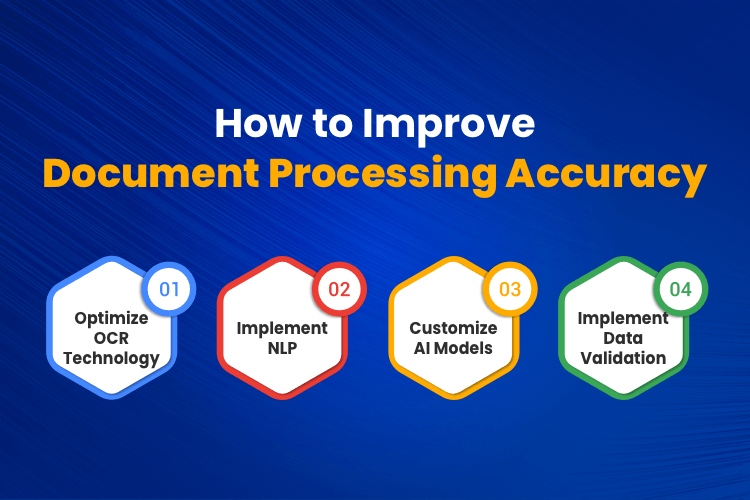
Now that you know about what is document processing and how document AI can be utilized for efficient processing of documents, it is important to dig into some strategies that would really help you improve the accuracy of document processing.
Optimize OCR Technology
As you may already have known that OCR is critical to process documents efficiently, but with standard OCR technology, you may not yield better results. What can you do then? Actually, there are some steps with which you will be able to improve its efficiency.
- Try using advanced OCR solutions that are integrated with AI, which helps you with Intelligent Character Recognition (ICR) especially to understand handwritten text.
- Use some techniques to pre-process images like removing image noises, adjust their resolutions, etc.
- Try implement multi-engine OCR comparison, where you will be able to utilize different OCRs to validate data you just extracted.
Implement NLP
One of the critical challenges faced by document processing as a whole, is that oftentimes machines get confused with similar terms having different meanings like for e.g. date, which refers to a calendar date that signifies a particular day of the year or month, a meeting between couples, and a fruit. Another prominent confusion is that similar terms expressed in different contexts, like date as in contract data vs. date of birth.
- Natural language processing aims to clear such errors as they are trained with large volumes of datasets. Let’s see how:
- With Named Entity Recognition (NER), for instance, AI accurately identifies names, dates, and other such data.
- NLP uses semantic understanding, which is an advanced way of interpreting text in contrast with traditional methods, which helps AI understand similar texts in different contexts.
- With multilingual NLP, you will be able to process documents in different languages with high amount of accuracy and precision.
Customize AI Models
A key strategy that significantly improves the accuracy of document processing is using AI models that are customized as per your industry requirements.
- Train your AI models using industry-related datasets like documents, invoices, contracts, etc.
- Use transfer learning to highly optimize your AI model so that it applies the learning comprehensively and efficiently.
- Enable feedback loops that help your AI model learn from mistakes which ultimately improves the efficiency of document processing.
Implement Data Validation
It’s true that document AI helps improve the accuracy of document processing, but to enhance the results further, you can implement some additional verification mechanisms.
- Relying on Robotic Process Automation (RPA) which fundamentally works on rule-based methods can be useful.
- Try cross-referencing by validating extracted data against the original records, which clears some prominent issues.
- With AI, you will have an option to segregate some processed outputs for human validation as it assigns accuracy scores to extracted data and flags low-scored output for your review. This is also called the human-in-the-loop (HITL) method, which gives way for continuous improvement in document processing results.
Which Industries Benefit From Document AI
As we know, document processing is not limited to any particular industry, rather its necessity spreads across businesses of different industries. Intelligent document processing solutions have its widespread applications to almost all industries.
| Industry |
Use Case |
Accuracy Improvement Strategies |
| Banking & Finance |
Loan processing, fraud detection. |
Multi-engine OCR, AI-powered fraud analysis. |
| Healthcare |
Medical records, insurance claims. |
Named entity recognition using NLP, data validation. |
| Legal & Compliance |
Contract analysis, regulatory compliance. |
AI-powered text analytics, human verification. |
| Retail & E-Commerce |
Invoice processing, customer service. |
RPA integration, contextual AI models. |
| Logistics & Supply Chain |
Order forms, shipment tracking. |
Automated validation, NLP-powered document classification. |
To Sum Up
Document AI, with no doubt, is the game-changer for businesses looking to improve document processing accuracy. By using advanced OCR, NLP, AI training, data validation, human-in-the-loop (HITL) approaches and automation with RPA, you can get more accuracy and reduce costs by coupling it with manual effort.
As AI gets better, businesses that invest in intelligent document processing will have a competitive edge, which you can virtually witness in operational efficiency, compliance, and decision-making accuracy. Now is the time to leverage Document AI for better document management.
Want to explore AI powered document processing services and solutions for your business? Reach out to Document AI experts of Tech.us today and transform your workflows for a smarter, more accurate tomorrow.
FAQs
1. What is document processing?
Document processing is the method by which machines capture, extract, organize, and even manage data from documents, be they physical or digital documents. It utilizes automated tools and technologies like Optical Character Recognition (OCR), Natural Language Processing (NLP), Artificial Intelligence (AI), and Machine Learning (ML) to process documents, which ultimately improves both efficiency and accuracy.
2. What are the steps for processing documents?
Document processing involves some series of steps that are listed as below:
- Document ingestion
- Data extraction
- Data Classification
- Validation
- Integration
These steps ensure documents are processed and necessary information is extracted from documents with a high degree of precision.
3. What does Doc AI do?
Doc AI, also called document AI, is a modern solution that you can use dedicatedly for processing documents using advanced artificial intelligence and its subsets like machine learning, deep learning, NLP, etc. It even automates document processing operations like extracting data, analyzing them, and classifying various kinds of documents like insurance forms, legal notices, etc., with high degree of accuracy.
4. What is the need for document processing using document AI?
Document processing is a tedious task if it needs to be done manually or with rule-based automation techniques. But, AI fundamentally facilitates automated document processing. However, document AI simplifies the whole process by utilizing algorithms and AI subsets like ML, NLP, and deep learning. It enables you to swiftly process documents, speeds up workflows, and improves overall business efficiency.
5. Can AI scan documents for document processing?
Yes. AI can scan documents with the use of Optical Character Recognition (OCR) but it doesn’t stop there. It performs full AI document analysis by analyzing data from docs and classifying them. It additionally uses NLP and ML to understand and comprehend data and further automate the whole process. Using these technologies, AI extracts text by recognizing even ambiguous languages and handwritings and validates them effectively.

